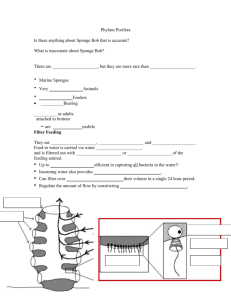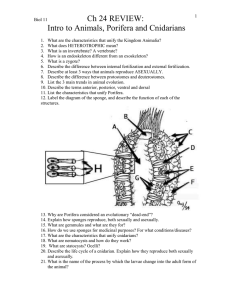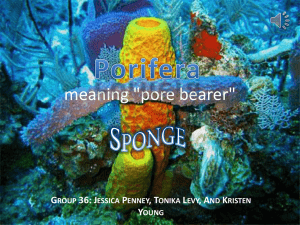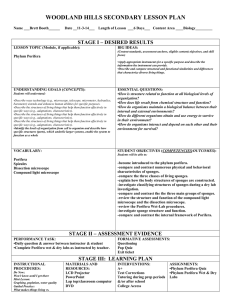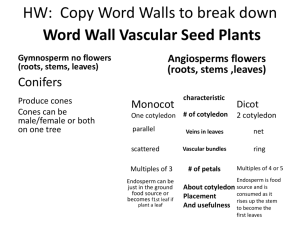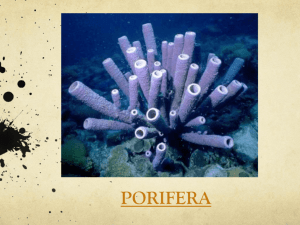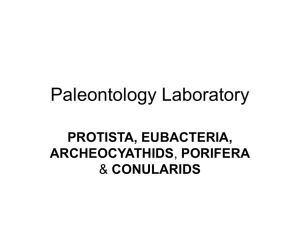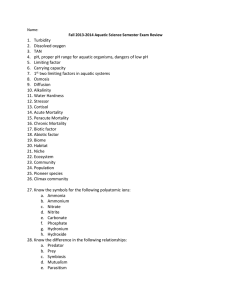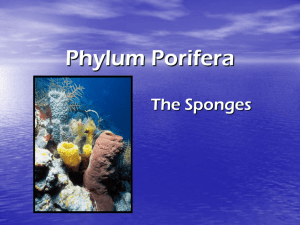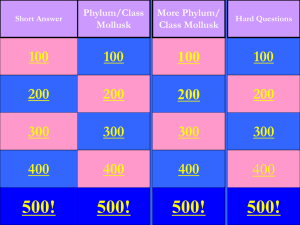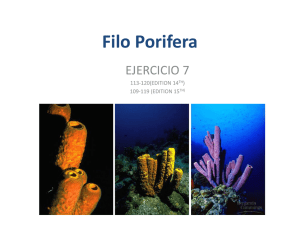Porifera
advertisement
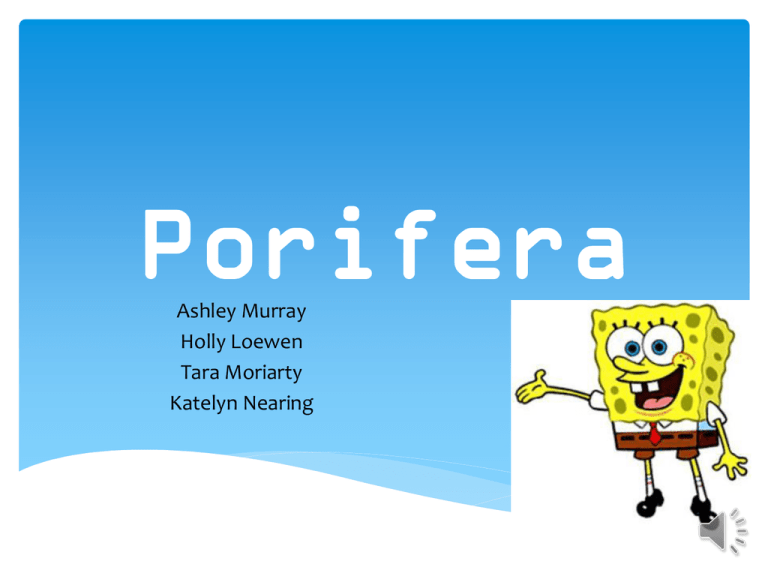
Porifera Ashley Murray Holly Loewen Tara Moriarty Katelyn Nearing What are Porifera? Porifera are more commonly known as sponges Approximately 5000 living species classified under this taxon 3 distinct groups: Hexactinellida (glass), Demospongia, and Calcera Evolutionary Origin One of the oldest known animal fossils (pre-Cambrian) Greatest diversity during Cretaceous period Major contributors to reef formation during the Phanerozoic period Still important constituents of reef communities Characteristics Do not have mouths- tiny pores through which they absorb water Flow of water through the sponge is unidirectional Variety of colours Found at any latitude Sessile, but some are able to move if attached to a crab shell Either asexual or sexual Skeleton made of collagen and spicules Feeding Water provides food and oxygen and a means for waste removal Volume of water can exceed 20,000x the sponge’s volume in 24 hours Filter bacteria from water (90% of bacteria found in water gets filtered out) Can also have green algae from which they draw nutrients Some sponges are carnivorous- they eat crustaceans Reproduction Asexual and Sexual Most are sexual (hermaphroditic) Produce eggs and sperm at different times Sperm is concentrated and released from excurrent opening (may be so dense that the sponge appears to be smoking!) Female sponges of the same species capture the sperm and fertilize the eggs through archaeocytes (special cells that transport sperm to the egg) Asexual sponges produce buds (gemmules- packets of several types of cells surrounded by a protective coating) Released into the water in the same manner as sexuallyreproduced sponges Sources www.ucmp.berkley.edu/porifera/poriferalh.html www.ucmp.berkley.edu/porifera/poriferamm.html http://animaldiversity.ummz.umich.edu/accounts/Porifera/ http://tolweb.org/Porifera/2464 http://paleo.cortland.edu/tutorial/Protista/porifera.htm http://www.ebiomedia.com/prod/BOsponges.html http://www.infusion.allconet.org/webquest/PhylumPorifer a.html

